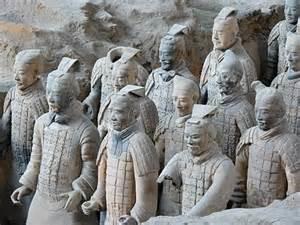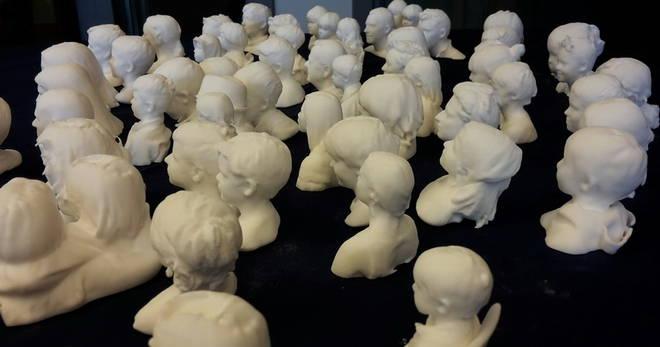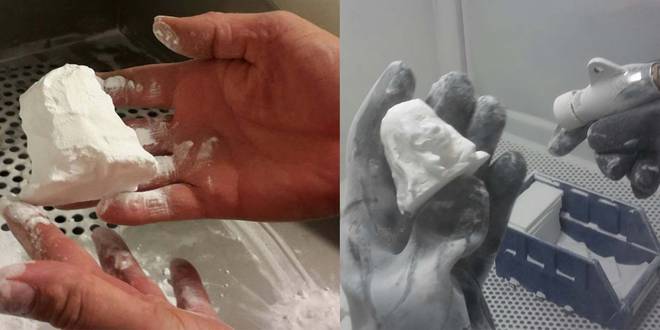 There are all kinds of different ways that people choose to display the basic concept of 3D design and printing technologies. In fact, there are as many ways as there are design files, it seems, and I always get a kick out of covering creative projects that both entertain and educate. One good example of such a project recently happened at Lund University in Sweden. Kulturnatten 2015 is an annual cultural event in Lund celebrating arts and science. Lund University’s School of Engineering’s division of Product Development decided it needed to demonstrate 3D printed objects to demonstrate 3D printing technologies, and it chose a rather unique display concept.
There are all kinds of different ways that people choose to display the basic concept of 3D design and printing technologies. In fact, there are as many ways as there are design files, it seems, and I always get a kick out of covering creative projects that both entertain and educate. One good example of such a project recently happened at Lund University in Sweden. Kulturnatten 2015 is an annual cultural event in Lund celebrating arts and science. Lund University’s School of Engineering’s division of Product Development decided it needed to demonstrate 3D printed objects to demonstrate 3D printing technologies, and it chose a rather unique display concept.
Flashback for a moment to ancient China. In 1974, farmers in the Shaanxi province discovered the now-famous Terracotta Army, which is said to have three pits containing 8,000 soldiers. China’s Xi’an Terracotta Army, which was funerary art (art related to buried remains) depicting the army of China’s First Emperor during the late 3rd century BCE. Well, Lund put its own spin on this remarkable discovery in China. The Lund display captures over 140 visitors (including children) in a 3D scanned and printed bust display that is quite a sight to behold. (Now if only they would bury the busts for future generations to discover!)
What prompted this idea is a desire to participate by displaying 3D technologies in Lund’s Kulturnatten. During Kulturnatten, individual heads were 3D scanned to make mini-me busts, and some were printed during the course of the day, but the bulk of them were printed in nylon with the University’s new Selective Laser Sintering (SLS) system. While the Xi’an warriors were formed out of terracotta, this project relied on a new and common 3D printing material instead: nylon.
Using design software, the busts were made to be 6 cm tall, and many were printed at one time. The scan files were “nested together” for printing and each bust has the individual’s name underneath. (If only we could say the same for all of those Chinese terracotta warriors!) The results are pretty cool. Like the Terracotta Army, the display is interesting as each individual figure comes to be a mere part of the larger whole.
Projects like this are excellent ways to educate the public not only about 3D printing technology but about the historical role that statues/ figures have played as commemorative elements of ancient societies. It’s amazing to think that the Terracotta Army was discovered as recent as 1974. While 3D printing encourages us to get prepared for the future, it can also prompt us to reflect more deeply on past societies and the technologies used to create the kind of wonder that the Terracotta Army represents.
Discuss this story in the Terracotta Army forum thread on 3DPB.com.
Subscribe to Our Email Newsletter
Stay up-to-date on all the latest news from the 3D printing industry and receive information and offers from third party vendors.
You May Also Like
3DPOD Episode 198: High Speed Sintering with Neil Hopkinson, VP of AM at Stratasys
Neil Hopkinson, a pioneering 3D printing researcher, played a pivotal role in developing a body of research that is widely utilized today. He also invented High Speed Sintering (HSS), also...
GE Additive Transforms into Colibrium Additive in New Brand Move
One of the largest and most compelling companies in the 3D printing industry, GE Additive, has undergone a rebrand. Now, known as Colibrium Additive, the company and its new name...
HP & INDO-MIM Collaborate to Boost Metal 3D Printing in India
HP Inc. and INDO-MIM, a US- and India-based supplier of metal injection molding (MIM) powders and contract manufacturer, have announced that the two companies will collaborate to accelerate additive manufacturing...
Nylon 3D Printed Parts Made More Functional with Coatings & Colors
Parts 3D printed from polyamide (PA, Nylon) 12 using powder bed fusion (PBF) are a mainstay in the additive manufacturing (AM) industry. While post-finishing processes have improved the porosity of...


































